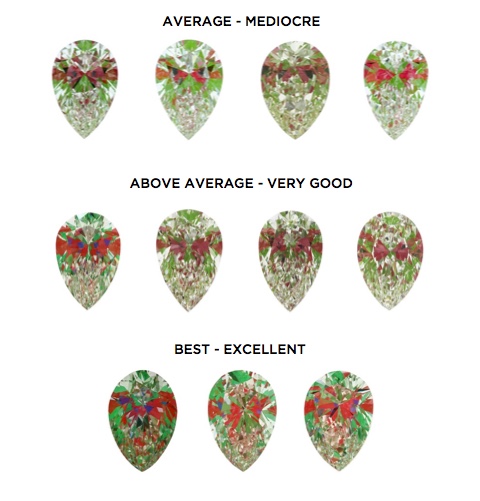Resembling a rain drop, a pear shaped diamond can technically be considered a combination of a round and marquise diamond. It is rounded on one end and pointed on the other.
Like the marquise and oval cuts, a pear shaped diamond can be slim or wide. The ideal length to width ratio of a classic pear shaped diamond is 1.4 to 1.7 depending on the preference of the consumer. This shape also has the added benefit of making the wearers fingers appear longer and slimmer.
Ideally, this shape should possess excellent or very good symmetry for optimal light performance. The pear shape should also be set with a prong at the point to protect it from incurring any damage.
The bow tie effect in 8 carat pear diamonds
Most pear shaped diamonds also possess some degree of bow‐tie effect, varying from near invisible to severe. With higher carat weights, the visibility of a bow tie will be more obvious than at lighter carat weights.
This effect cannot be ascertained just by reviewing a diamonds certificate or dimensions ‐ only a visual inspection can determine the severity of a bow‐tie. If you are considering an 8 carat diamond, it’s therefore imperative that you see the diamonds either in real life, or in high quality video form multiple angles to judge the degree to which the diamond is affected by a bow tie, if at all.
8 carat pear diamond cut guide
IDEAL | EXCELLENT | VERY GOOD | GOOD | FAIR | POOR | |
|---|---|---|---|---|---|---|
| TABLE % | 55 – 60 | 53 – 63 | 52 or 64 – 65 | 51 or 66 – 68 | 50 or 69 – 70 | < 50 or > 70 |
| DEPTH % | 59 – 63 | 58 – 62 | 56 – 57.9 or 62.1 – 66 | 53 – 55.9 or 66.1 – 71 | 50 – 52.9 or 71.1 – 74 | < 50 or > 74 |
| GIRDLE | Very Thin – Slightly Thick | Very Thin to Thick | Very Thin to Very Thick | Extra Thin to Extra Thick | ||
| CULET | None | Very Small | Small | Medium | > Medium | |
| L/W RATIO | 1.5 – 1.75 | 1.45 – 1.55 | 1.40 – 1.44 or 1.56 – 1.65 | 1.35 – 1.39 or 1.66 – 1.80 | 1.25 – 1.34 or 1.81 – 2.00 | > 1.25 or < 2.00 |
| CROWN HEIGHT % | 12 – 15% | 11.5 – 16.6% | 10.1 – 17.5% | 9 – 18.9% | 7.8 – 19.5% | < 7.8% or > 19.5% |
8 carat pear diamond color guide
EXCELLENT | VERY GOOD | GOOD | FAIR | POOR | |
|---|---|---|---|---|---|
| < .50 CT | D – G | H – I | J – K | L – M | > M |
| .51 – 1.0 CT | D – F | G | H – I | J – K | > K |
| 1.0 – 2.0 CT | D – F | G – H | I – J | > J | |
| > 2.0 CT | D – F | G | H – I | > I | |
| FLUORO | NONE | FAINT – MEDIUM | STRONG | VERY STRONG |
8 carat pear diamond clarity guide
| EXCELLENT | VERY GOOD | GOOD | FAIR | POOR | |
|---|---|---|---|---|---|
| < .50 CT | FL – VS2 | SI1 – SI2 | I1 | I2 | > I2 |
| .51 – 1.0 CT | FL – VS1 | VS2 – SI1 | SI2 | I1 – I2 | > I2 |
| 1.0 – 2.0 CT | FL – VVS2 | VS1 – VS2 | SI1 – SI2 | I1 | > I1 |
| > 2.0 CT | FL – VVS2 | VS1 – VS2 | SI1 | SI2 | > SI2 |
8 Carat pear shaped diamond ASET and Idealscope
Both ASET and Idealscope images can help you to better exaluate the light performance of your diamond. Both tools will reveal areas of light leakage in white, but an ASET reading contains more detailed information. Because of this, it is the preferred method for evaluating fancy cut diamonds. However, because of the idealscope’s simplicity, it is a more user-friendly tool for non-gemologists. All you need to know when reading an idealscope is that white areas represent light leakage (bad) and red areas indicate light return (good).
Check out these images below for examples of ASET and Idealscope readings for pear diamonds:


